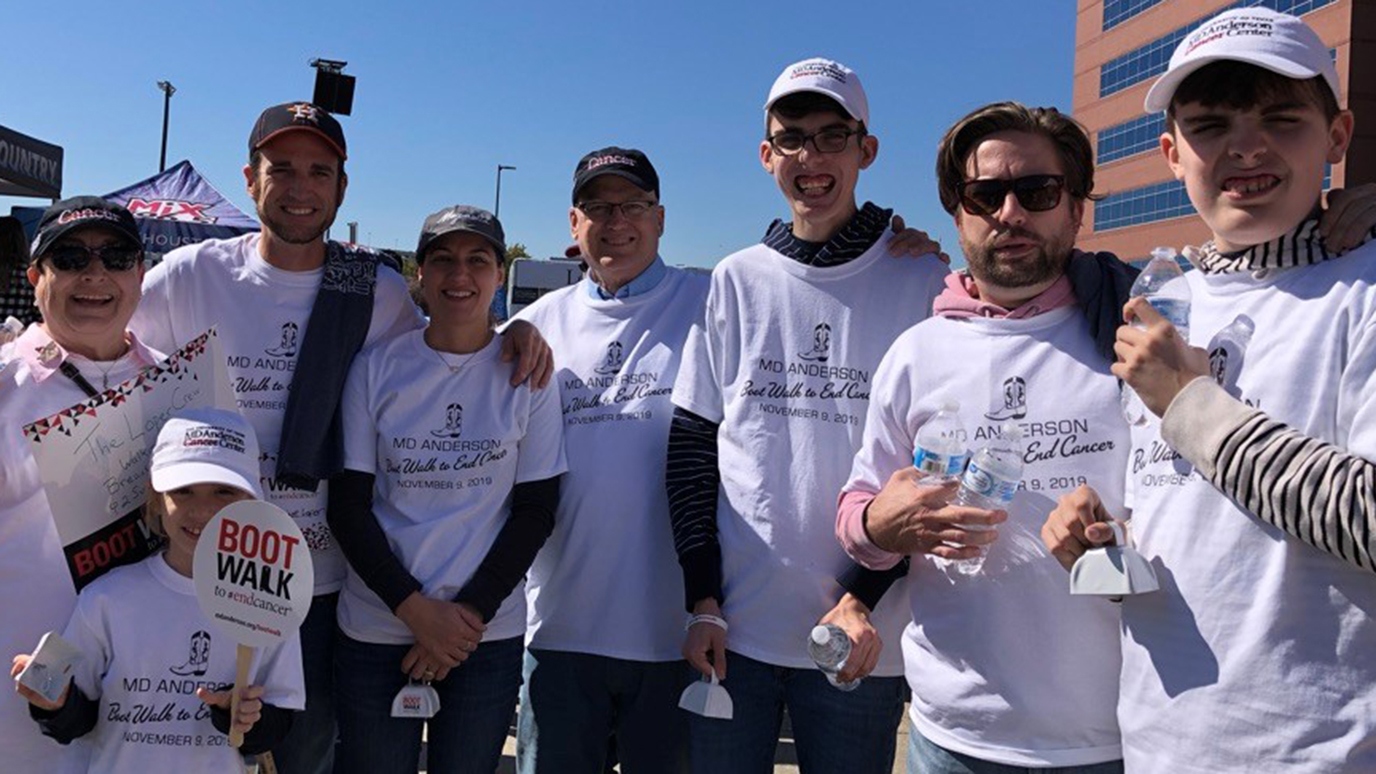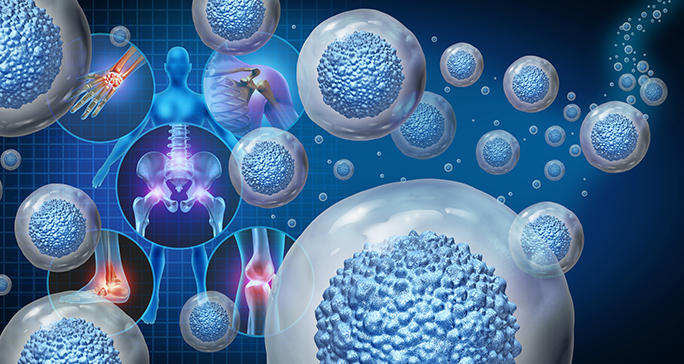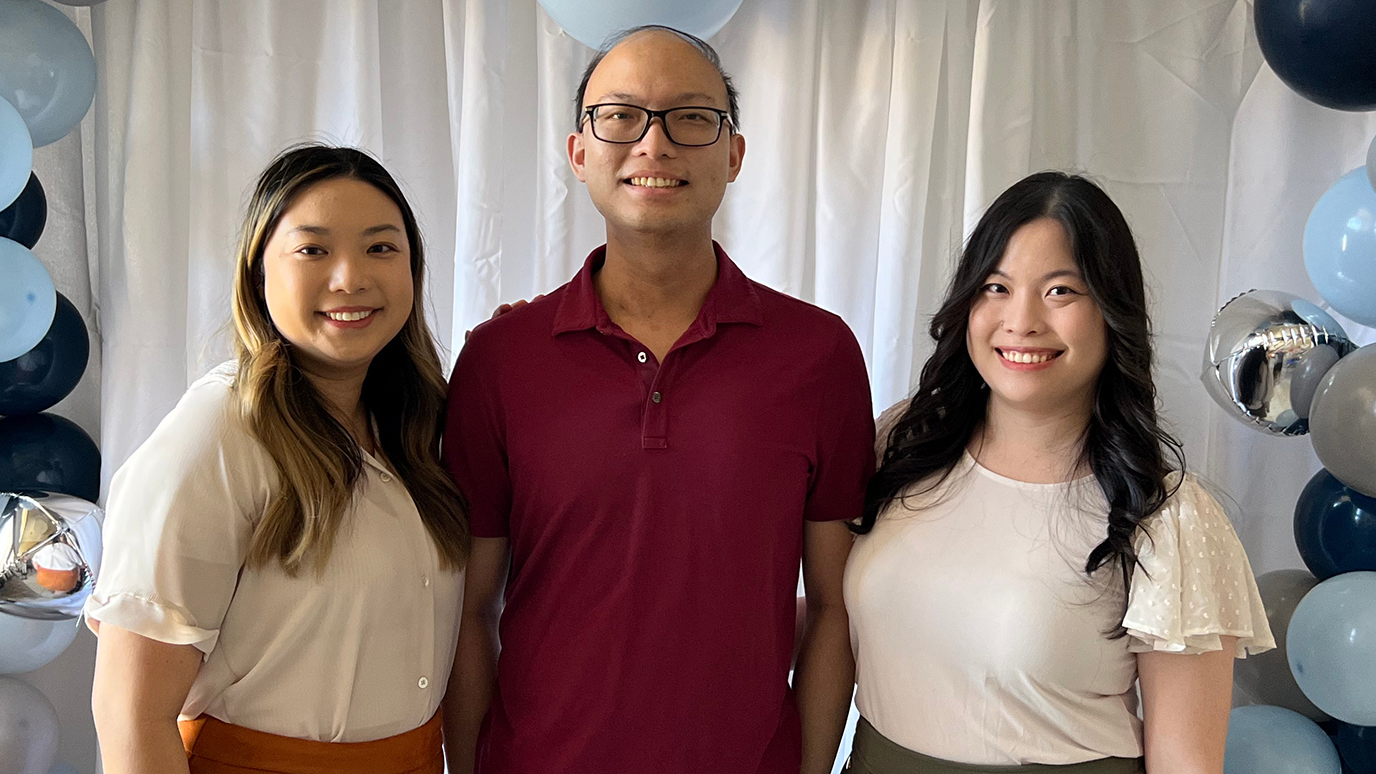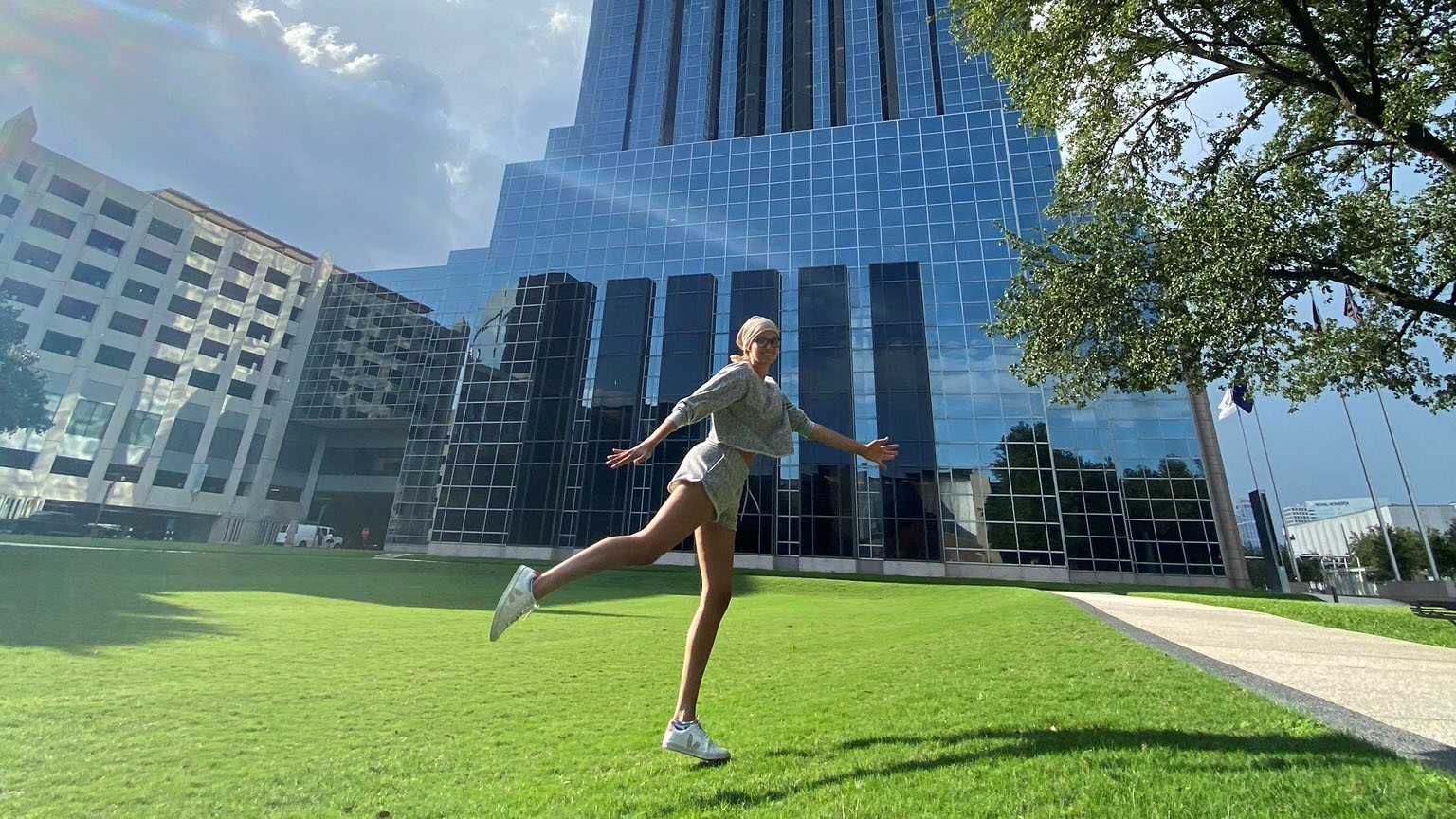- Diseases
- Acoustic Neuroma (14)
- Adrenal Gland Tumor (24)
- Anal Cancer (66)
- Anemia (2)
- Appendix Cancer (16)
- Bile Duct Cancer (28)
- Bladder Cancer (68)
- Brain Metastases (28)
- Brain Tumor (228)
- Breast Cancer (716)
- Breast Implant-Associated Anaplastic Large Cell Lymphoma (2)
- Cancer of Unknown Primary (4)
- Carcinoid Tumor (8)
- Cervical Cancer (154)
- Colon Cancer (164)
- Colorectal Cancer (110)
- Endocrine Tumor (4)
- Esophageal Cancer (42)
- Eye Cancer (36)
- Fallopian Tube Cancer (6)
- Germ Cell Tumor (4)
- Gestational Trophoblastic Disease (2)
- Head and Neck Cancer (6)
- Kidney Cancer (124)
- Leukemia (344)
- Liver Cancer (50)
- Lung Cancer (288)
- Lymphoma (284)
- Mesothelioma (14)
- Metastasis (30)
- Multiple Myeloma (98)
- Myelodysplastic Syndrome (60)
- Myeloproliferative Neoplasm (4)
- Neuroendocrine Tumors (16)
- Oral Cancer (100)
- Ovarian Cancer (170)
- Pancreatic Cancer (166)
- Parathyroid Disease (2)
- Penile Cancer (14)
- Pituitary Tumor (6)
- Prostate Cancer (144)
- Rectal Cancer (58)
- Renal Medullary Carcinoma (6)
- Salivary Gland Cancer (14)
- Sarcoma (236)
- Skin Cancer (294)
- Skull Base Tumors (56)
- Spinal Tumor (12)
- Stomach Cancer (60)
- Testicular Cancer (28)
- Throat Cancer (90)
- Thymoma (6)
- Thyroid Cancer (98)
- Tonsil Cancer (30)
- Uterine Cancer (78)
- Vaginal Cancer (14)
- Vulvar Cancer (18)
- Cancer Topic
- Adolescent and Young Adult Cancer Issues (20)
- Advance Care Planning (10)
- Biostatistics (2)
- Blood Donation (18)
- Bone Health (8)
- COVID-19 (362)
- Cancer Recurrence (120)
- Childhood Cancer Issues (120)
- Clinical Trials (624)
- Complementary Integrative Medicine (24)
- Cytogenetics (2)
- DNA Methylation (4)
- Diagnosis (228)
- Epigenetics (6)
- Fertility (62)
- Follow-up Guidelines (2)
- Health Disparities (14)
- Hereditary Cancer Syndromes (122)
- Immunology (18)
- Li-Fraumeni Syndrome (8)
- Mental Health (118)
- Molecular Diagnostics (8)
- Pain Management (62)
- Palliative Care (8)
- Pathology (10)
- Physical Therapy (18)
- Pregnancy (18)
- Prevention (890)
- Research (390)
- Second Opinion (74)
- Sexuality (16)
- Side Effects (602)
- Sleep Disorders (10)
- Stem Cell Transplantation Cellular Therapy (216)
- Support (404)
- Survivorship (322)
- Symptoms (184)
- Treatment (1770)
Stem cell transplant wipes out all signs of cancer in acute myeloid leukemia survivor
6 minute read | Published April 06, 2022
Medically Reviewed | Last reviewed by an MD Anderson Cancer Center medical professional on April 06, 2022
I’m a statistics guy, so when my doctor explained that a stem cell transplant offered me the greatest odds for surviving acute myeloid leukemia, I was on board.
I’d already had two months of chemotherapy back home in Oklahoma, but it hardly helped. Then I transferred to MD Anderson, where doctors discovered that a genetic mutation was fueling the leukemia cells in my bone marrow. Luckily, an MD Anderson clinical trial was testing a new drug designed to target mutations like mine. I joined, and almost immediately, my cancer cells plummeted from 70% to 7%.
My acute myeloid leukemia treatment plan
To wipe out the remaining cancer cells, my doctor said I’d need a week of high-dose chemotherapy. It’s so powerful, he warned, that it would destroy not only the cancer cells, but also healthy cells in my bone marrow, leaving it empty.
Then I’d undergo a stem cell transplant to replenish my bone marrow with healthy cells from a donor. If I showed no evidence of cancer two years after the transplant, I’d have an excellent chance of remaining in complete remission for a very long time.
“When can we get started?” I asked. I was excited and hopeful. A stem cell transplant would bring me one step closer to a cure.
My stem cell transplant
I completed the high-dose chemotherapy in the hospital and spent two days recovering before getting my donor stem cells last November.
When the nurse delivered them to my room, I sent a silent thank you to my anonymous donor. That generous person was saving my life.
The nurse connected the bag of stem cells to a catheter leading into a vein in my body. Then the infusion began. The entire process was painless and lasted about an hour. There’s a great deal of anticipation leading up to a transplant. But when it happens, it’s uneventful. I mainly felt relief as the stem cells flowed into my veins, because this was my chance to beat cancer.
When stem cells enter your bloodstream, they automatically migrate to your bone marrow. Once there, they begin producing normal, cancer-free blood cells. It’s as though they’re on autopilot and they know exactly where to go and what to do. It’s amazing.
Protection from infection
After the transplant, MD Anderson became my home away from home. I stayed in the hospital for three weeks while my bone marrow made new blood cells. Because the chemotherapy had wiped out my white blood cells which fight germs, I had a high risk for infection. The hospital was the safest place for me to be.
I decorated my room with lots of family photos and mementos to make it feel like home. I play Frisbee golf, so I brought my Frisbee to remind me that I’d soon play again. My sister, who’s an amazing artist, drew a picture of a majestic-looking lion and captioned it “Courage.” Everyone who came into my room, from the doctors and nurses to the dining and housekeeping staffs, had something to say about it.
To pass the time, I talked on the phone with friends and family, played video games on my PlayStation which I brought from home, and watched lots of TV. I must have watched every superhero movie ever made and streamed more TV shows than I care to admit.
After a while, the walls of the room began to cave in on me, so I took walks. The stem cell transplant unit is equipped with a special air filtration system that prevents germs from entering. This means transplant patients can go outside their rooms to walk around and socialize, but they can’t leave the safety bubble of the unit.
To build strength, I walked laps around the unit twice a day – once after the doctors made their morning rounds, and once after dinner. Five laps equal one mile, and once you complete three miles, the nurses reward you with a bandana. By the time I was discharged, I’d walked 27 miles. My grandmother made me a quilt from the bandanas that I received, and it means the world to me.
Preventing graft vs. host disease
A week after my transplant, my doctor prescribed a medication called cyclophosphamide. It’s a chemotherapy drug, but it also helps prevent graft vs. host disease (GVHD). The condition occurs when donor stem cells view a recipient’s tissues and organs as foreign, and attack them as if they were invaders. Graft vs. host disease can happen any time after a transplant, but it’s more likely to occur when the marrow has just begun to make healthy cells.
I was pleased to have cyclophosphamide’s added protection, but the medication created unpleasant side effects, like nausea, vomiting and diarrhea. Painful ulcers formed under my tongue and made eating difficult. I lost 18 pounds.
Applesauce was one of the few foods I could swallow. But if I didn’t feel like eating a bowl of applesauce when it was delivered, it soon became stale and the dietary staff took it away. Then I’d wake up in the middle of the night wishing I had applesauce.
A tip from a fellow patient solved that problem: He taught me to ask for Kosher applesauce. Instead of being served in a bowl, it’s delivered in an individually sealed cup, like the ones in children’s lunch kits. I’d order three at a time and stockpile them in my room. Whenever I wanted applesauce, it was there.
The next 100 days
After almost a month in the hospital, tests confirmed that my donor’s stem cells had become my stem cells. They engrafted, meaning they took up residence in my bone marrow and were producing the healthy new blood cells that would form my new immune system. I could leave the hospital.
The day I was discharged, I rang the bell to signal the end of my treatment. I’d been hearing that bell for a month. Every time it clanged, it meant somebody was leaving the hospital after a successful transplant. When I first arrived on the unit, I promised my mom, “I’ll be ringing that bell soon.” Now it was my turn.
For the next 100 days, I was required to stay near MD Anderson in case I had any problems. My mom stayed with me in a condominium only a few miles from the hospital. It’s owned by a fellow Oklahoma resident whose husband is now cancer-free after being treated at MD Anderson.
I passed the 100-day mark with no problems and headed home to Oklahoma.
Thriving after a stem cell transplant
Today, I still show no signs of cancer. My body has fully accepted my donor’s stem cells, and my bone marrow is now 100% my donor’s bone marrow. Before the transplant, my blood type was O+. After the transplant, it’s A+, the same as my donor’s. When you have a stem cell transplant, you basically “become” your donor on the inside.
I visit MD Anderson regularly for checkups and to get revaccinated. A stem cell transplant wipes out all your vaccinations, even the ones you got as a child. You have to start over again, from scratch. MD Anderson has me on a two-year vaccine schedule. After each shot, they test my immunity to make sure the vaccine “took.”
Because my immune system is still immature, my doctor says I’ll need to wait at least a year before I return to my job as a licensed electrician. Until then, I’ll be enjoying time with my friends and family, playing some Frisbee golf, and relaxing with my three dogs. It’s good to be back in Oklahoma, where, gratefully, all is OK.
Request an appointment at MD Anderson online or by calling 1-855-481-0415.
Related Cancerwise Stories

My bone marrow is now 100% my donor’s bone marrow.
Connor Johnson
Survivor





